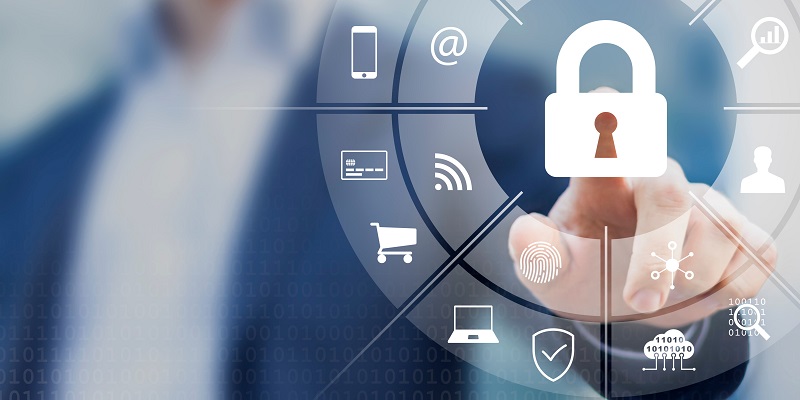
Cybersecurity Challenges in Health Tech: Protecting Patient Data
The healthcare industry has undergone a profound transformation through the integration of health tech solutions. Electronic Health Records (EHRs), telemedicine, wearable devices, and various other innovations have not only improved patient care but also streamlined healthcare processes. However, this digital evolution comes with its own set of challenges, and perhaps the most critical among them is the relentless threat posed by cyberattacks on patient data.
In this blog, we will learn about the cybersecurity challenges faced by Health Tech and the imperative of safeguarding patient data.
The Rising Significance of Health Tech encompasses a wide range of technologies, including electronic health records (EHRs), telemedicine, wearable devices, and health monitoring apps. These innovations have not only improved the accessibility and quality of healthcare but have also facilitated remote patient monitoring, personalized medicine, and data-driven decision-making. As the healthcare industry becomes increasingly reliant on interconnected devices and digital platforms, the volume of sensitive patient data being generated and stored has skyrocketed. This influx of data has made the healthcare sector a prime target for cybercriminals seeking to exploit vulnerabilities and gain unauthorized access to valuable information.
Key Cybersecurity Challenges
1.Data Breaches and Unauthorized Access
One of the most pressing challenges in Health Tech is the constant threat of data breaches. The unauthorized access to patient records can have severe consequences, ranging from identity theft to fraudulent medical claims. The sensitive nature of healthcare data makes it a lucrative target on the dark web, emphasizing the critical need for robust cybersecurity measures.
2.Interconnected Systems and IoT Vulnerabilities
The interconnected nature of Health Tech systems poses a significant challenge. As more devices and systems communicate with each other through the Internet of Things (IoT), the attack surface for cybercriminals expands. Vulnerabilities in one device or system can potentially compromise the entire network, putting patient data at risk.
3.Lack of Standardization in Security Protocols
The Health Tech landscape is diverse, with various platforms, applications, and devices operating on different standards and protocols. The lack of standardized security measures across the industry creates gaps that malicious actors can exploit. Establishing a universal set of cybersecurity standards is crucial to fortify the overall defense against cyber
threats.
4.Insider Threats and Employee Training
While external threats are a major concern, insider threats are equally significant. Healthcare organizations must ensure that their staff is well-trained on cybersecurity best practices to prevent unintentional data breaches. Additionally, implementing robust access controls and monitoring systems can help mitigate the risk of insider threats.
5.Ransomware Attacks
Ransomware attacks have become increasingly prevalent in the healthcare sector. Cybercriminals encrypt sensitive data and demand a ransom for its release, crippling healthcare operations and putting patient safety at risk. Developing and regularly testing incident response plans is crucial to minimize the impact of such attacks.
6.Regulatory Compliance Challenges
The healthcare industry is subject to numerous regulations and compliance standards, such as the Health Insurance Portability and Accountability Act (HIPAA). Ensuring compliance with these regulations adds an additional layer of complexity to cybersecurity efforts. Non-compliance not only poses legal consequences but also jeopardizes patient trust.
Addressing the Challenges
1.Encryption and Secure Communication
Implementing end-to-end encryption for sensitive data and securing communication channels are fundamental steps in safeguarding patient information. This ensures that even if a breach occurs, the intercepted data remains unreadable without the encryption keys.
2.Continuous Monitoring and Incident Response
Continuous monitoring of network activities and prompt incident response are crucial in identifying and mitigating cyber threats in real-time. Healthcare organizations should invest in advanced cybersecurity tools and establish response teams capable of handling diverse cyber incidents.
3.Employee Training and Awareness Programs
Educating healthcare staff about cybersecurity risks and best practices is paramount. Regular training sessions and awareness programs can empower employees to recognize and thwart potential threats, reducing the likelihood of accidental data breaches.
4.Standardization of Security Protocols
Collaboration within the industry to establish and adhere to standardized security protocols is essential. This can foster a unified front against cyber threats and enable the development of interoperable technologies with built-in security features.
5.Third-Party Risk Management
Many healthcare organizations rely on third-party vendors for various services. It is crucial to assess and manage the cybersecurity
risks associated with these vendors to prevent vulnerabilities in the supply chain that could be exploited by cybercriminals.
6.Regular Security Audits and Penetration Testing
Conducting regular security audits and penetration testing helps identify and rectify vulnerabilities in Health Tech systems. Proactive measures, such as identifying and patching weaknesses before they are exploited, are vital in maintaining a robust cybersecurity posture.
Conclusion
As Health Tech continues to revolutionize the healthcare industry, the protection of patient data must remain a top priority. Cybersecurity challenges are diverse and ever-evolving, requiring a comprehensive and proactive approach to mitigate risks effectively.
Healthcare organizations, technology developers, and regulatory bodies must collaborate to establish and enforce stringent cybersecurity standards, ensuring the confidentiality, integrity, and availability of patient information.

Leave a Reply